Established by the Detroit Edison Company in 1913, the Barton Hills area of 2000 acres straddling both sides of the Huron River was originally a site for electric power production. The company quickly promoted Barton Hills as an exclusive Ann Arbor residential area and engaged Olmsted Engineering to design a community of graceful homes. It is the Olmsted philosophy of creating harmony between nature and man-made features which to this day distinguishes the village. In short order Detroit Edison commissioned the Donald Ross designed Barton Hills CC on the highest area above the newly created Barton Pond. The original site for the clubhouse was selected as the best site in the village with wonderful views of Huron River. Eventually, trees overcrowded the site and the views disappeared. In fact, most homes had a water view before the influx of trees. Even the addition of a country club was not enough to overcome sluggish sales further distressed by the Depression. Much like the electric railroad in evidence around many Detroit area train tracks, the power scheme nor residential development never fully materialized into a money making venture. In the 1940s Detroit Edison washed its hands of its holdings by offering to the residents of Barton Hills the unsold lots and rights to collect taxes on sold properties. As the community became more efficient at self management it would eventually become a municipality in the early 1970s.
The village of 350ish residents is located just north of Ann Arbor, yet seemingly lost in decades of seclusion. Few Ann Arborites could give accurate directions to the village or the club buried amongst tree covered hills and curved roads, both of which are by Olmsted Engineering design. The course is evenly split with returning nines, but the considerably better back nine covers the much more dramatic terrain. Typical of Ross, the greens are full of intrigue and offer many spicy hole locations. The more Ross courses I play the more I realize that his green designs cannot be pegged as a certain style. Many think of Ross greens as well contoured and generally slanted back to front. Barton Hills features a set which mainly relies on slope with the occasional bit of contour to unsettle the golfer. The course was restored by R Pritchard in 2014 and the club continues to carry out tree removal. The back nine will close shortly for a major green resurfacing job...I saw heavy machinery in waiting on the back nine.

The course begins in stout fashion with a fairly difficult uphill two-shotter. I will quickly address one of my biggest issues with the otherwise very good course...blind hazards. I am not one to worry much about such devilish deception, but I think this card is over-played at Barton Hills. The first hint of the hidden trouble is a bunker behind the first green. However, the worst offenders are blind ponds on 6 and 10. I am astounded that the pond on #6 is original Ross design. Anyway, off to the par 5 second...a very good hole which seems to take us into a prairie.
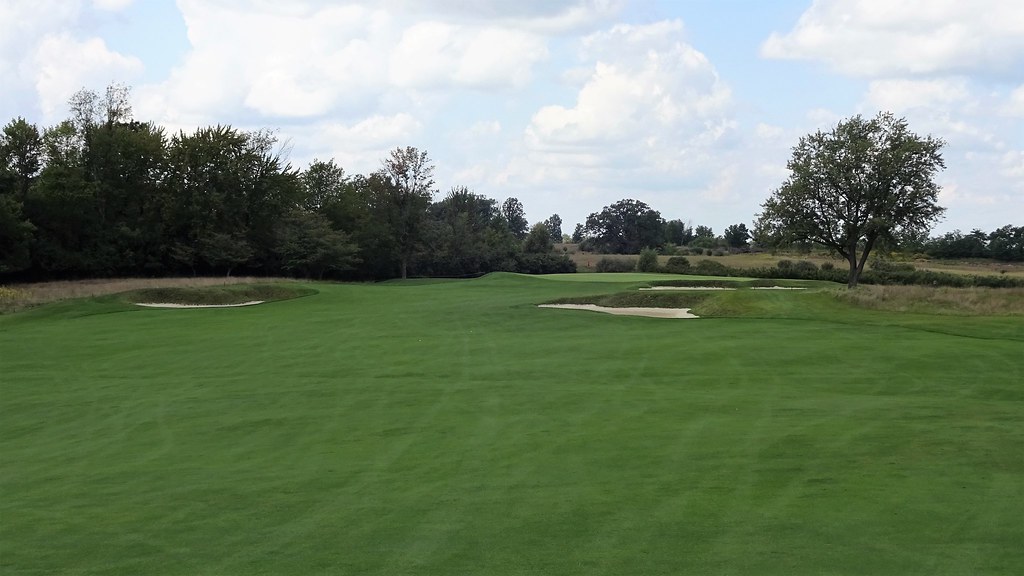
The third turns sharply left around trees which are very well maintained for recovery shots. The green features a curious half-pipe. A short two-shotter, the 4th is tricky because of a sea of sand and a green which leans hard to the left.
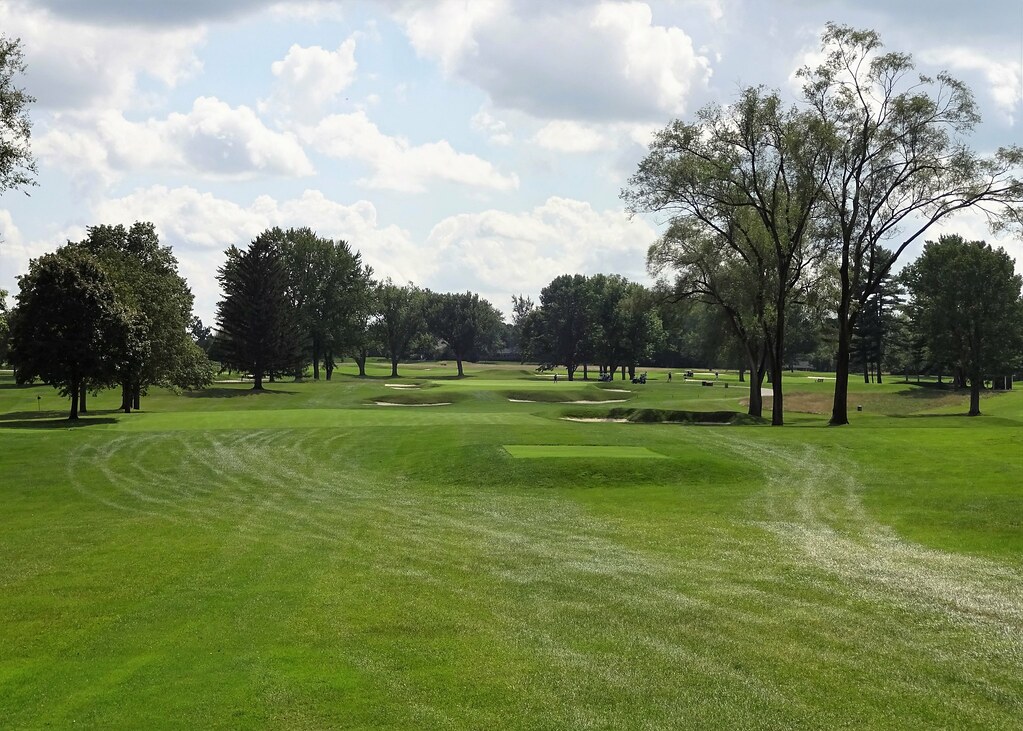
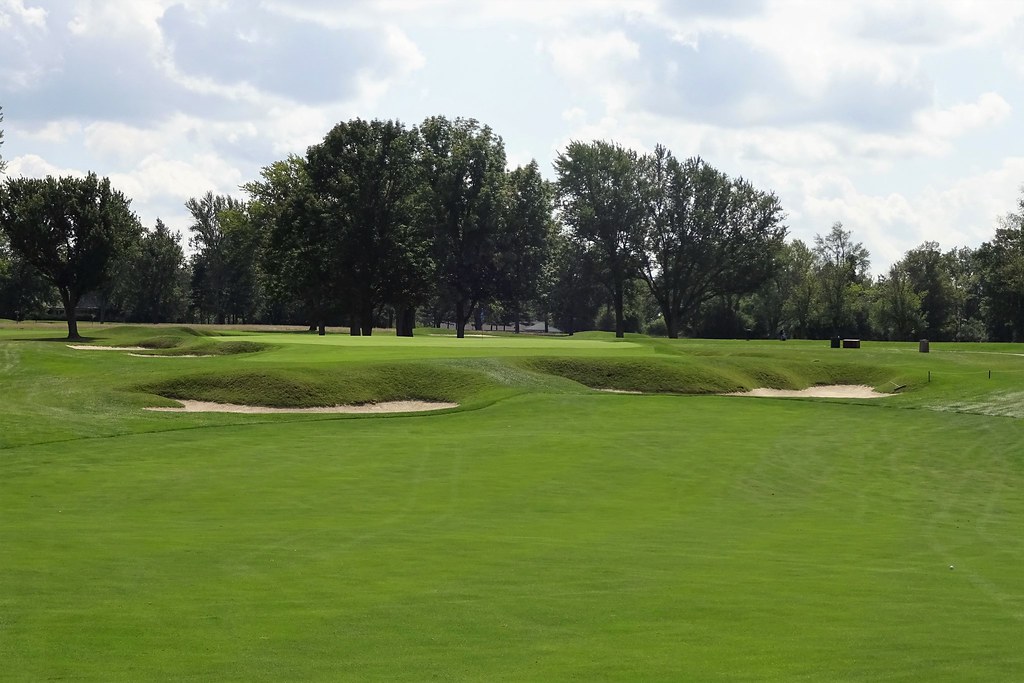
The par 3 account is opened on the fifth and it's a beauty. The green slopes far more to the left than photos suggest.
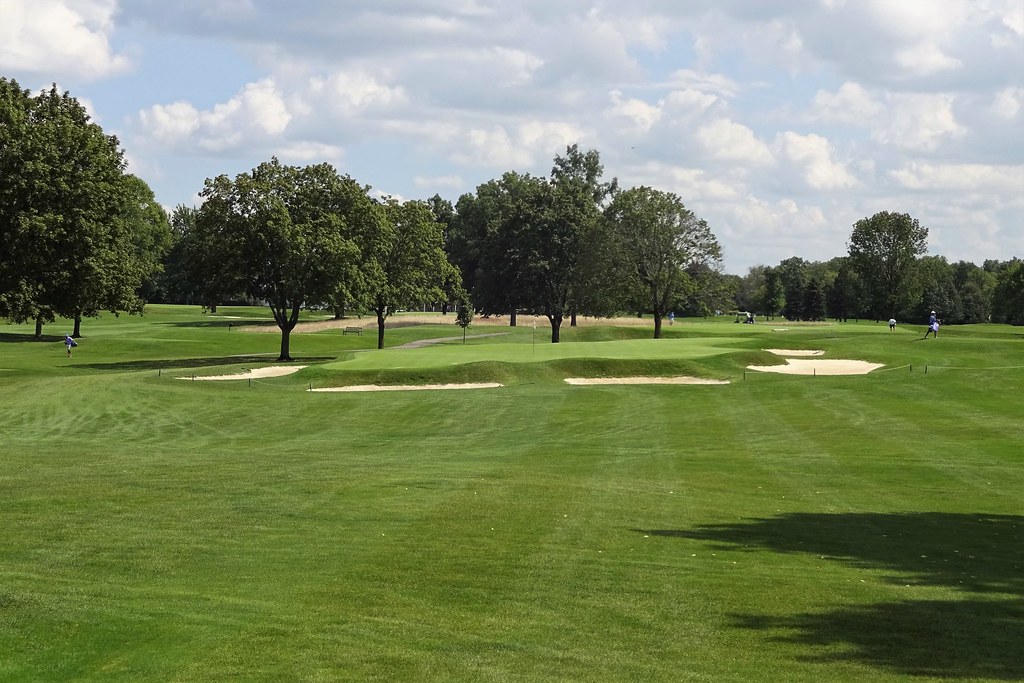
The offending pond on 6!
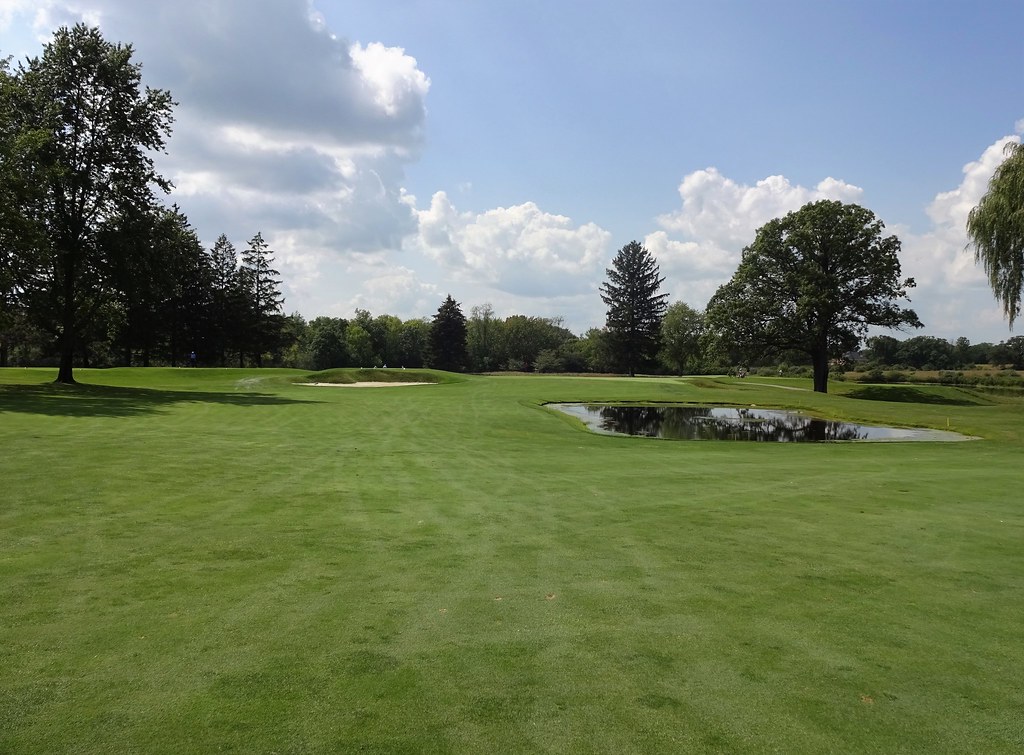
For mine, Barton Hills properly commences on the 7th. From this point in, excepting the previously mentioned plethora of blind hazards, the course is full of surprise and delight. Legging left around a cascade of bunkers, the approach for this 400ish yard hole is simple and satisfying. At this point I will mention the "native" rough. In my experience, the maintenance of this type of rough is often a complete failure with thick, lush undergrowth allowed to compromise the concept. Not so in the case of Barton Hills! The rough is just about perfect...allowing for recovery shots in a manner which shames Scottish links clubs. It is curious then why the cut lines are not pushed to the outside of bunkers...the investigation continues as to why this type of course presentation is favoured by such a large percentage of clubs.
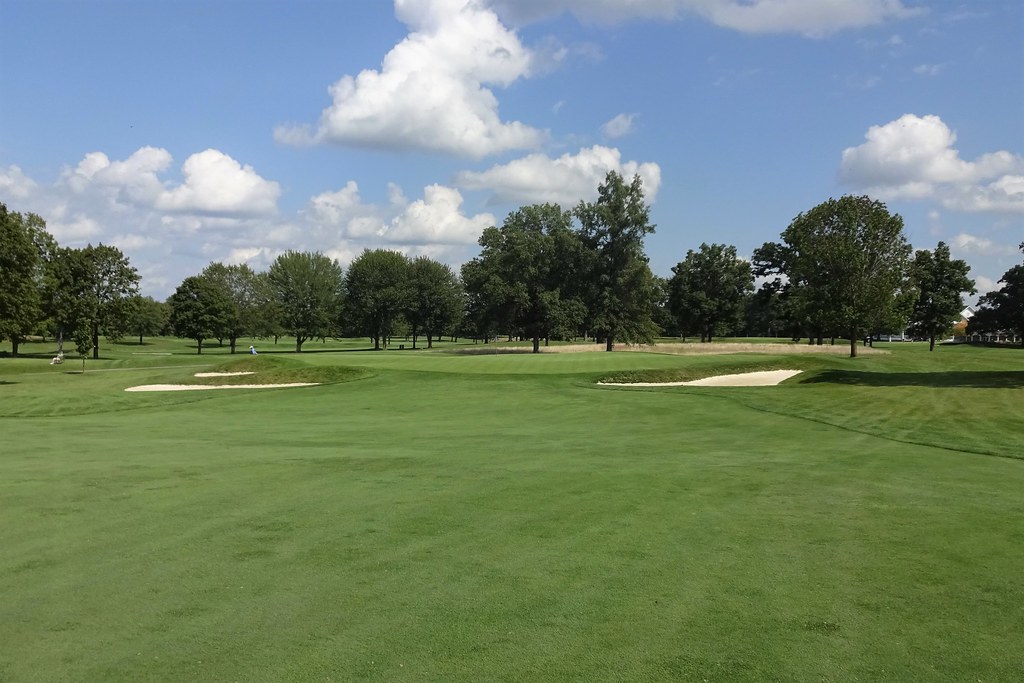
Turning away from the house, the short 8th is a fun hole. The grade level green is seemingly scalloped from the earth.
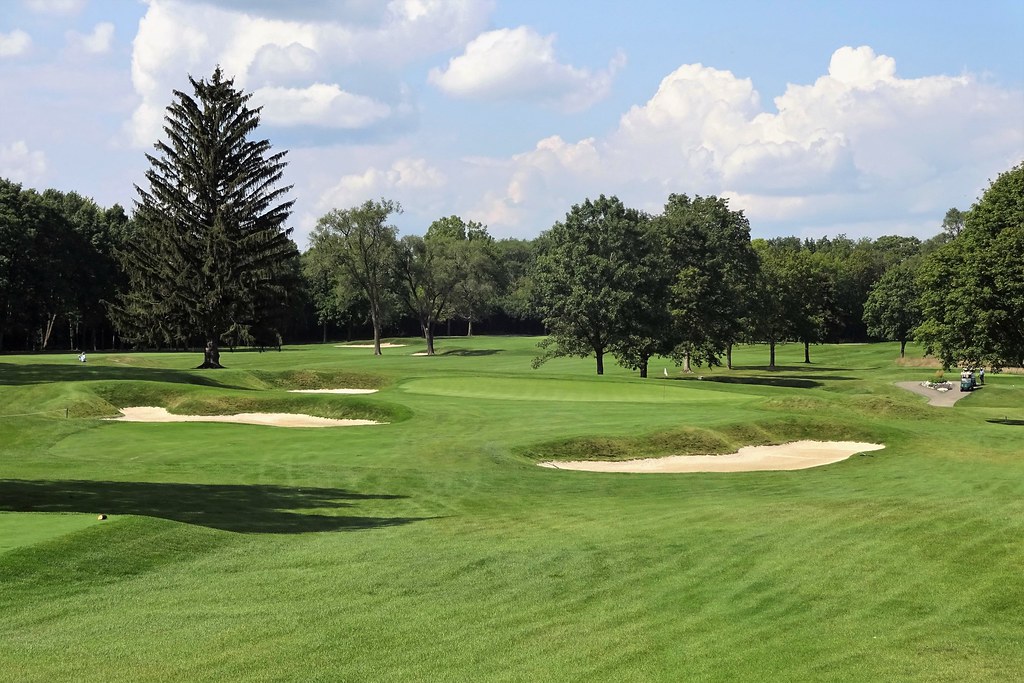
The par 5 ninth is a chance to get one back against the card.
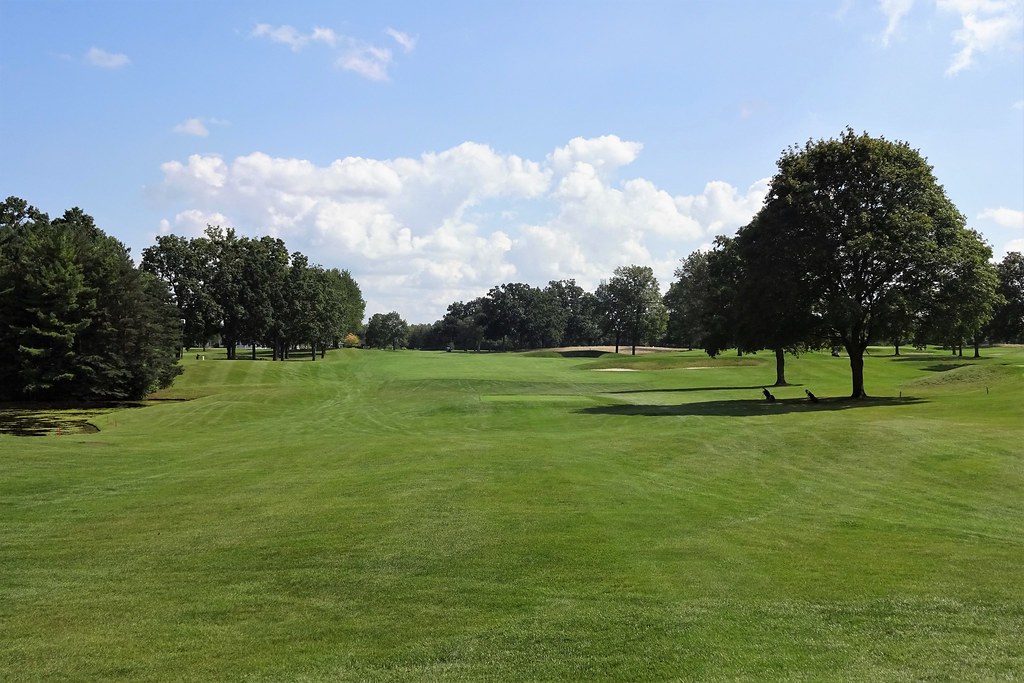
The photo doesn't reflect the difficulty of the raised middle part of the green.
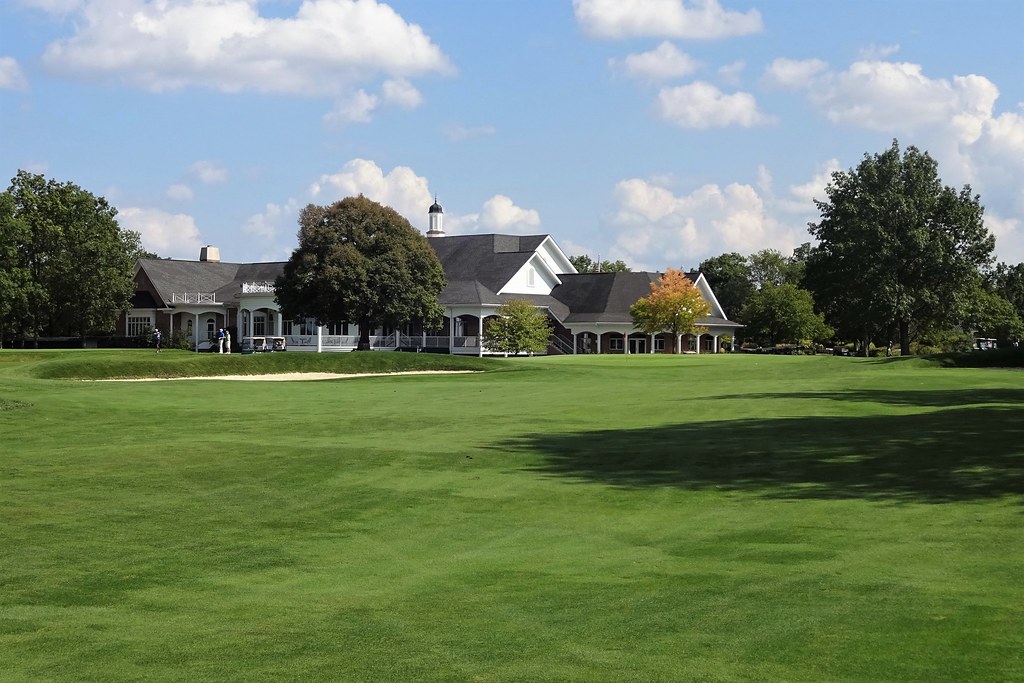
More to follow.
Ciao